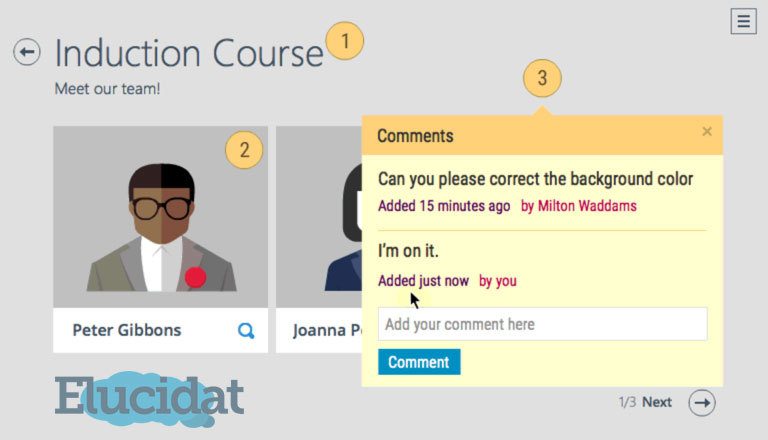Why Online Collaboration Can Help Your Learning And Development Team
Today I’m going to share some solutions to help you solve the common challenges that are affecting your Learning and Development (L&D) team's efficiency. I'll address the 3 phases in eLearning development process: design, development, and review.
The 3 Phases In eLearning Development Process: Design, Development, and Review.
1. The Design Phase.
In the old days, key stakeholders would pass eLearning projects on to the design and development teams who would produce the shiny eLearning courses. Problems came up when the key stakeholders saw the finished product some time later and it either didn’t meet the original requirements or the requirements had changed in the time it had taken to get the project out.
Sponsored content - article continues below
Trending eLearning Content Providers
Oops! All that time was wasted and now you’re stuck with painful change requests.
Prototyping.
With rapid eLearning tools, you can now build functioning prototypes early in the process, without spending much money. You can get these early designs in front of stakeholders before you start development, and then iterate until you get the solution right.
Online collaboration plays an important role during the iterations. Authoring tools –like Elucidat– include a comments feature that lets you provide feedback by adding sticky notes on the screen exactly over elements. This is useful if you want specific feedback on specific elements. For example, is the logo correctly displayed? Or are the colors acceptable?

You can share your feedback and comments with people in your organization so they can sign off on the design before you start any costly development.
2. The Development Phase.
With most eLearning courses, you’ll be using a multi-talented team of authors, graphic designers, and developers. In order to compress time lines and reduce costs, you don’t want your team sitting idle while waiting for files that someone else is working on.
Authoring tools with inbuilt collaboration enable your team to work on projects simultaneously. Instead of packaging up and sending big eLearning files over email or via the network, team members can access and make changes directly inside the tool via an internet connection.
Inbuilt collaboration encourages agile development by allowing you to bring your entire team into the development phase.
In the past, you may have used waterfall methodologies such as ADDIE. In this scenario, you have a lot of contact with stakeholders in the design stage, but lose contact during the period of the production. The problem with this approach is you miss out on all the opportunities to collaborate and risk the final product not meeting your stakeholders’ expectations.
An agile development approach keeps you in contact all the time, enabling you to iterate and demonstrate the results every week. You get to show progress, ask for feedback and decide together what the next priorities need to be.
3. The Review Phase.
If you’ve been around the eLearning block a few times, you’ll be familiar with the review bottleneck. One of the biggest challenges in managing your project is that subject matter experts and reviewers are busy people with full-time jobs.
Traditionally, you might create an alpha version to package up for review. Stakeholders then review the eLearning in a Word document with screenshots and feedback referenced as Page 4 or that picture in a separate document.
This is a nightmare to manage and organize.
Inbuilt collaboration features can remove a lot of these issues. Instead of being tied to your desktop computer, online collaboration enables anyone with access and an internet connection to view and leave comments.
Now, instead of waiting around for feedback or suggesting changes in a separate Word document, you can ask for and get feedback directly inside your eLearning course. Tools such as Elucidat allow you to make comments on the screen and track the responses. This eliminates the need to send files back and forth or track review cycles in other software applications.
Summary: Give Online Collaboration A Try
Online collaboration can increase the efficiency of your large or distributed Learning and Development team because it makes it easier to work with team members in all the key stages of the development process.
Personally, I think the biggest efficiency gain comes in the form of the online review. I love how Elucidat empowers me to collaborate with reviewers directly inside a fully-functioning module (all directly through the system). This facilitates a collaborative process that enhances quality and streamlines efficiency.











